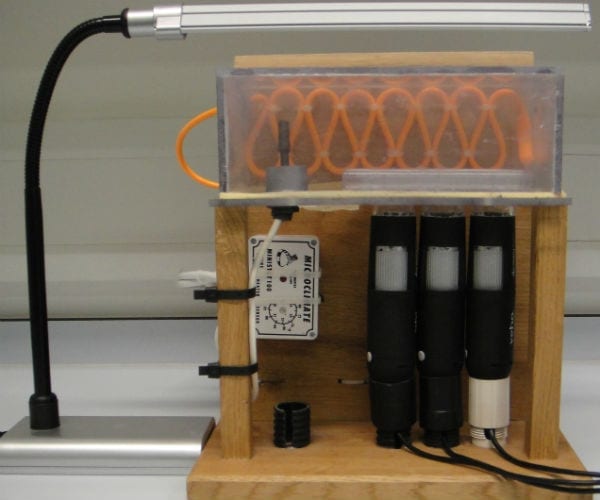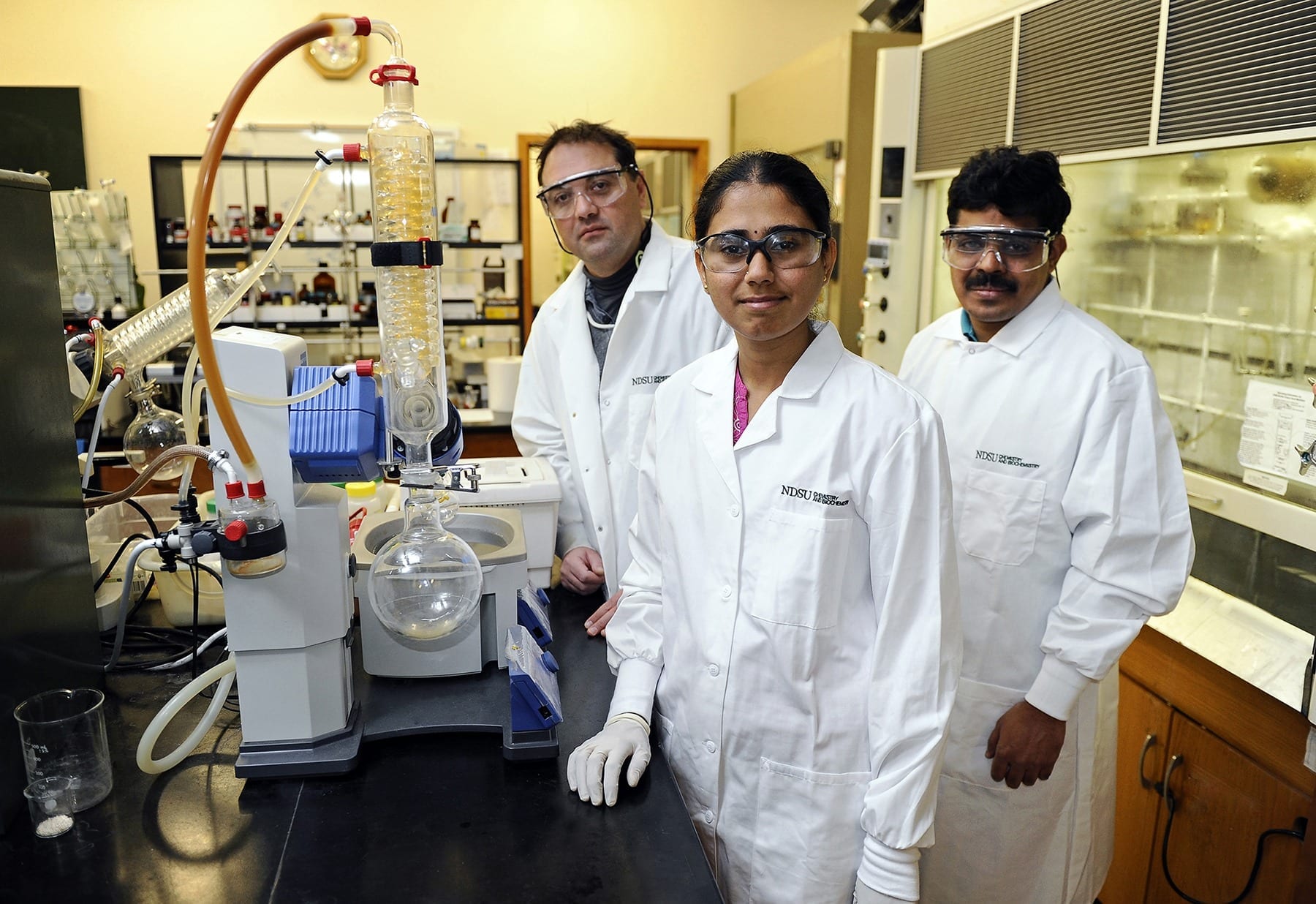
Expensive tests for measuring everything from sperm motility to cancer diagnosis have just been made hundreds of thousands of pounds cheaper by a PhD student from Brunel University London who hacked his own microscope.
Adam Lynch, from the university’s College of Health and Life Sciences, created his own inverted microscope by adapting a cheap instrument he bought online to save himself time and money.
The tool is used to measure cell motility – how fast cells move from one place to another – but the high-quality equipment, used to automatically test multiple samples, can stretch to hundreds of thousands of pounds.
Now Adam has a cut-price version for a study to understand if a snail’s immune system responds to chemical pollutants present in the water, which might influence the levels of transmission of Schistosome parasites from snails to humans. The team at Brunel needed the inverted microscope to see whether immune cell behaviour was affected by polluted water. But they needed more than one machine to be able to run multiple tests.
Adam, who estimates the cost of his system to be around £160 but thinks it could be made cheaper still, said: “When you’re looking at motility in cells you’re only interested in the data – how fast the cell gets from A to B means more than a high-resolution image. Even with a high-cost microscope you will reduce the image down so that it’s just a black dot on the screen moving against a white background so that it’s easier for a computer to read.”
Adam realised a USB microscope he’d bought online could be clamped upside down on a table to produce the same images as the much more expensive inverted microscope.
“It worked ok as I could sort of see cells, which are about 50 micrometres long, but the images weren’t fantastic,” he said. “But people don’t realise that you can quite easily make a high-magnification microscope, it’s just a matter of getting a lens and the right angle of lighting, so when I turned off the lighting that came with the instrument and used external lights I found I could see the cells quite clearly.”
The Latest on: DIY microscope
[google_news title=”” keyword=”DIY microscope” num_posts=”10″ blurb_length=”0″ show_thumb=”left”]
via Google News
The Latest on: DIY microscope
- See the most detailed map of human brain matter ever createdon May 9, 2024 at 11:01 am
From there, the researchers spent a full year carefully imaging each slice via electron microscope. Then ... Like science, tech, and DIY projects? Sign up to receive Popular Science's emails and get ...
- How We Got The Scanning Electron Microscopeon May 8, 2024 at 7:00 pm
According to [Asianometry], no one believed in the scanning electron microscope. No one, that is, except [Charles Oatley].The video below tells the whole story. The Cambridge graduate built radios ...
- Is DIY Pest Control A Good Idea?on May 8, 2024 at 3:03 am
In some cases, DIY pest control is an inexpensive and effective way to reclaim your home. However, there are other instances that call for professional pest control help. As a good rule of thumb ...
- Best DIY Home Security Systems of 2024on May 8, 2024 at 12:41 am
Macy Meyer is a N.C. native who graduated from UNC-Chapel Hill in 2021 with a B.A. in English and Journalism. She currently resides in Charlotte, N.C., where she has been working as an Editor I ...
- Sourdough under the microscope reveals microbes cultivated over generationson May 7, 2024 at 5:00 am
Since sourdough starters are created from wild yeast and bacteria in the flour, it creates a favorable environment for many types of microbes to flourish. There can be more than 20 different species ...
- Lesser-known facts about microscope and its historyon April 14, 2024 at 11:30 am
The modern microscope emerged in the 17th century, but magnifying objects with lenses dates back to ancient civilizations. Egyptians and Romans used rudimentary lenses. Zacharias and Hans Janssen ...
- What is a Compound Microscope and What Are Its Basic Useson April 2, 2024 at 5:09 pm
For anyone who has visited a scientific laboratory will have seen a compound microscope. For someone who has been looking for a good compound microscope, we might first let you know what exactly ...
- 8 Tricks To Eliminate Anthills In Your Yardon January 28, 2024 at 10:32 am
This DIY solution is extremely effective because of the ants' relationship ... Diatomaceous earth may appear soft and chalky to the naked eye, but seen under a microscope, it has abrasive and sharp ...
- Should you install DIY solar panels?on January 22, 2024 at 2:17 am
He lives on Long Island, New York. Reach out to him on LinkedIn. DIY solar panels are more affordable than pro systems because you don’t have to pay for labor or design services. A DIY system ...
- What Is a Mole?on November 6, 2023 at 2:12 pm
If the mole is suspicious, a healthcare provider will send a skin cell sample to the laboratory so it can be checked out under the microscope. Mole removal is not a DIY project that you should attempt ...
via Bing News









